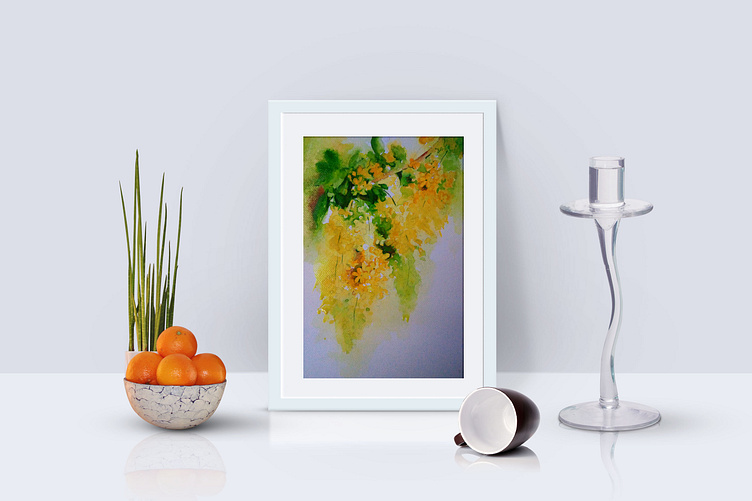Watercolor Flower Painting ( Sunalo)
Watercolor Painting. Watercolor painting is one of the most rewarding and approachable forms of art. Watercolor is a painting method in which the paints are made of pigments suspended in a water-based solution. The traditional and most common support material to which the paint is applied for watercolor paintings is watercolor paper. Other supports include papyrus, bark papers, plastics, vellum, leather, fabric, wood and watercolor canvas. ☛ History Watercolor painting is extremely old, dating perhaps to the cave paintings of paleolithic Europe, and has been used for manuscript illustration since at least Egyptian times but especially in the European Middle Ages. However, its continuous history as an art medium begins with the Renaissance. The German Northern Renaissance artist Albrecht Durer (1471–1528), who painted several fine botanical, wildlife, and landscape watercolors, is generally considered among the earliest exponents of watercolor. ☛ What need to Start Watercolor Painting You don’t need much to start painting. The basics include a brush, watercolor paper, and a few paints. And you don’t need a huge range of colors to get great results. ☛ Color Basic color theory tells us that you can mix any color from just three primary colors: yellow, red, and blue. In reality you need more than just three primary colored paints to mix any desired hue. The smallest palette for the best range of color mixing consists of six colors. A warm and cool yellow, a warm and cool blue, and a warm and cool red. ☛ Brush Next you need a brush. Watercolor brushes are designed to work specifically well with water. They have a good pointed tip for accuracy, and they hold a lot of water Try to find a medium sized round brush to begin with. Round brushes are the most versatile and allow a wide range of brushstrokes. And if your brush is too small you’ll waste a lot of time picking up paint, and it will limit your brushwork. ☛ Paper Watercolor paper is a necessity, because any other kind of paper won’t handle the wet paint very well. High quality 100% cotton paper can be pricey. But you can get perfectly good student grade paper which is sufficient to begin with. Just make sure the paper is reasonably thick. A good minimum weight is 140 lb / 300 gsm. Watercolor paint is endlessly rewarding. But it has a very playful nature. Pigment and water often do what they like. They blend together to produce gorgeous patterns of color. But watercolor is also transparent. And transparent paint leaves every brushstroke visible. For these reasons watercolors have the reputation of being difficult to learn and control. I think that’s a bit unfair. You might have an accident with your brush. But these happy accidents should be seen as an opportunity not a mistake. This way you’ll get greater enjoyment from the painting process.
